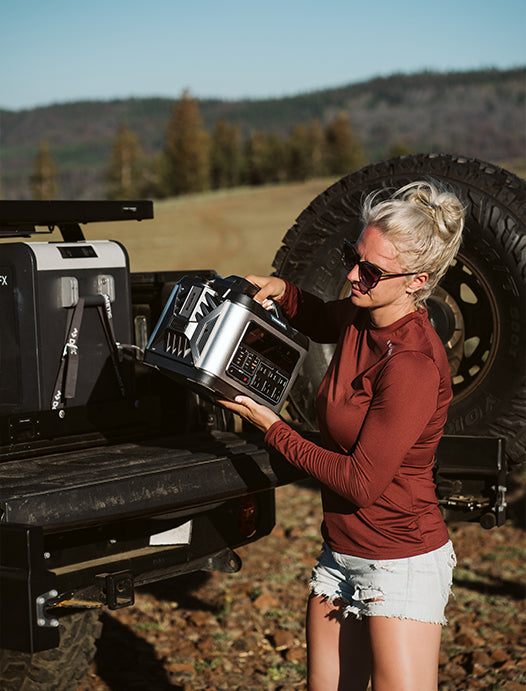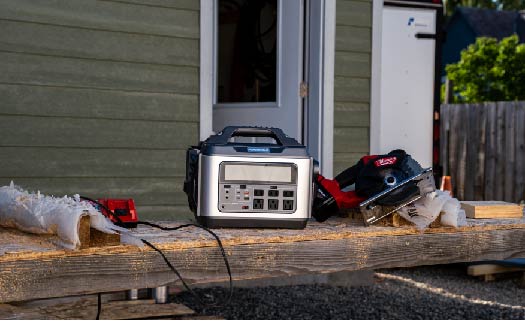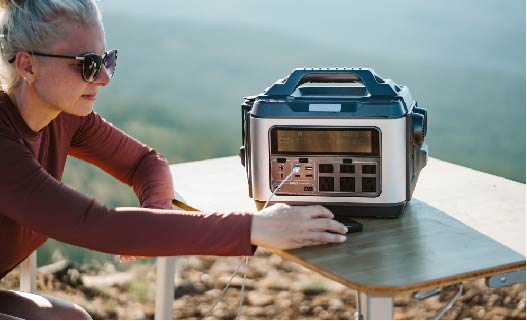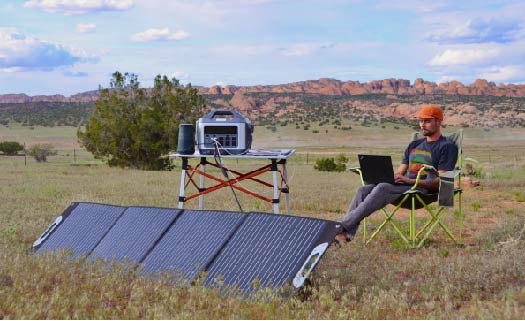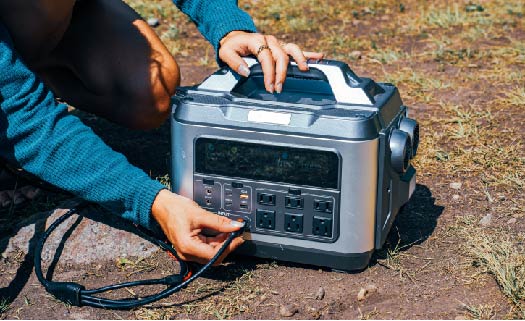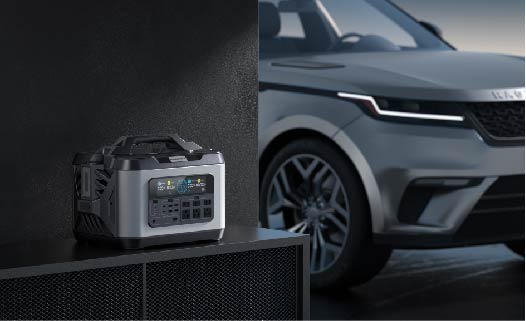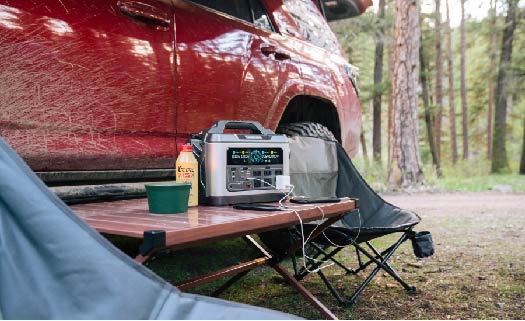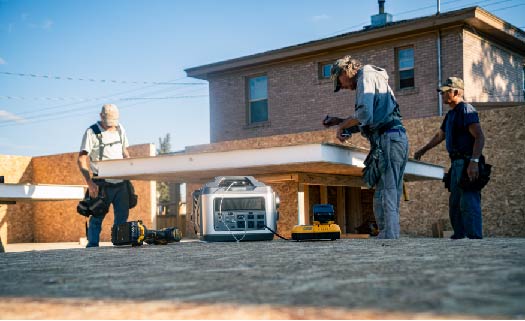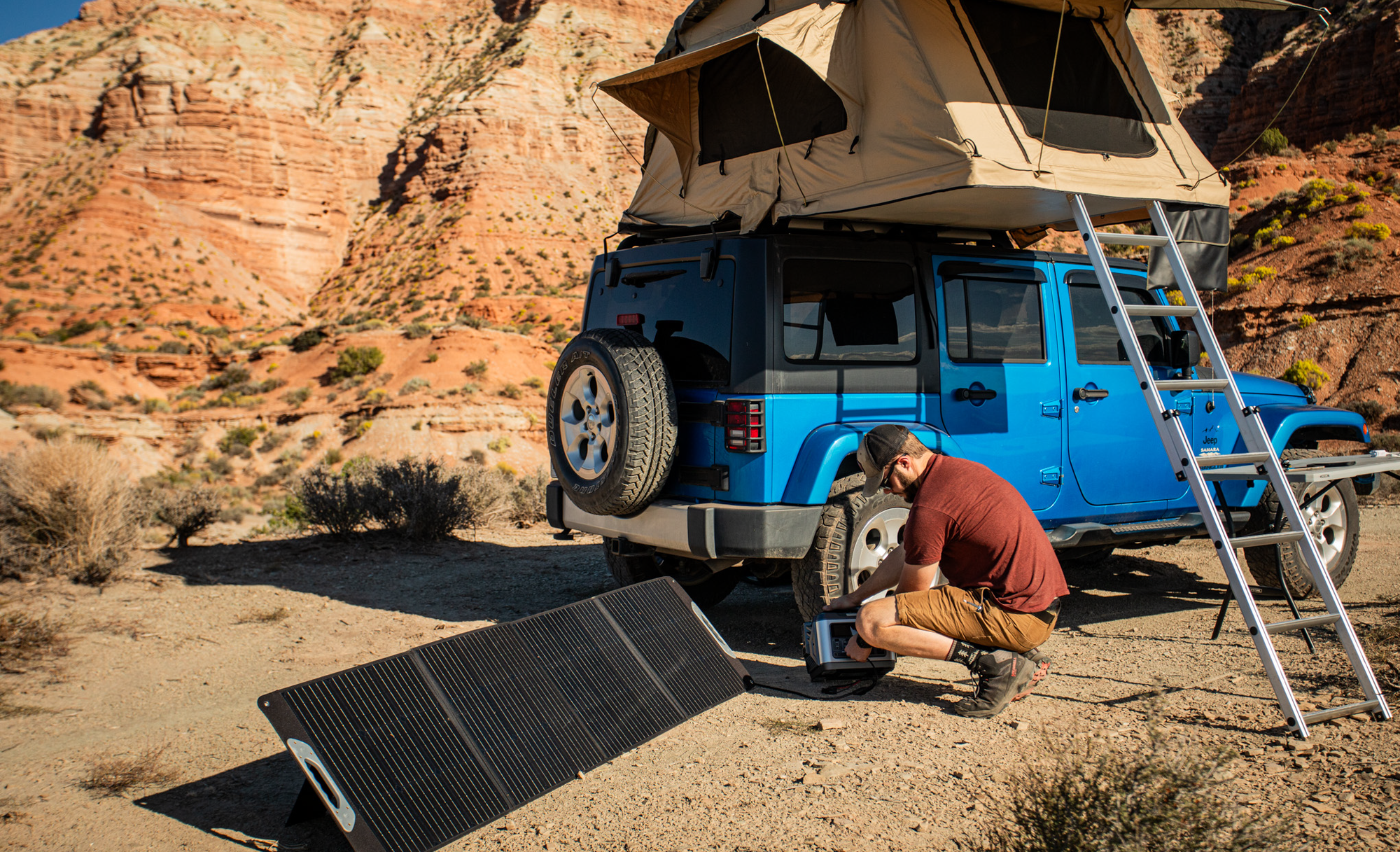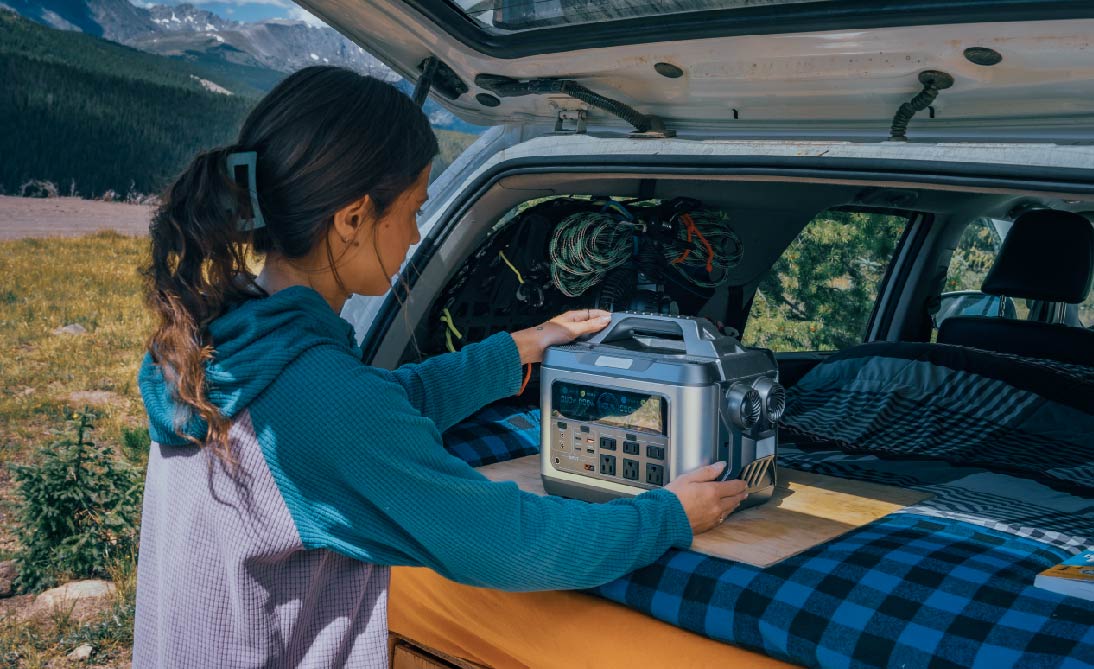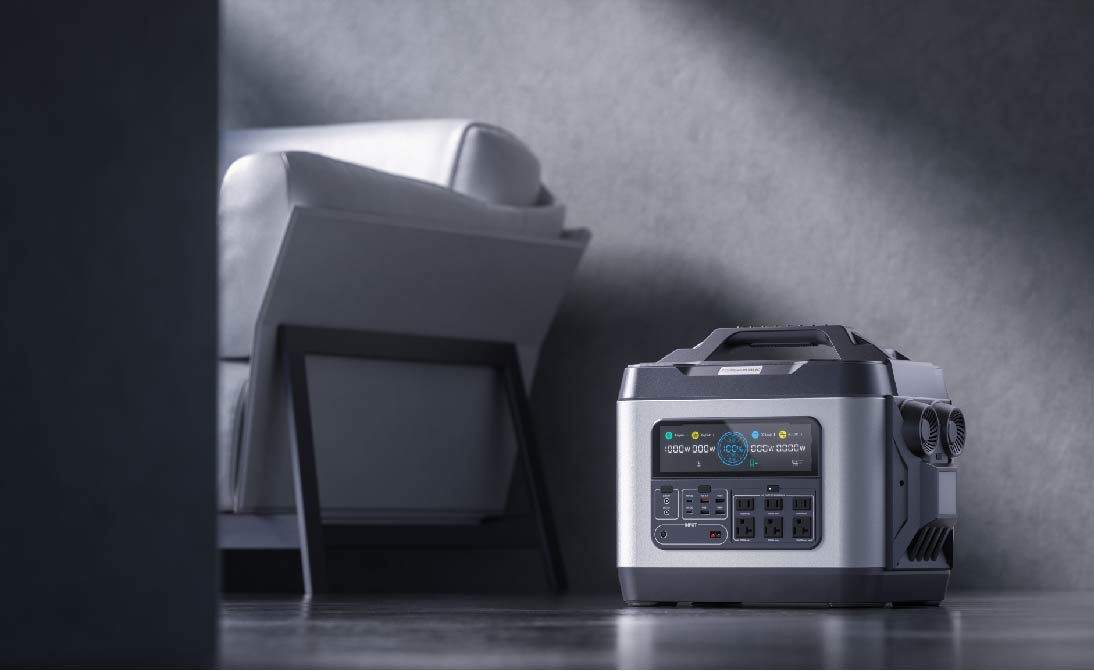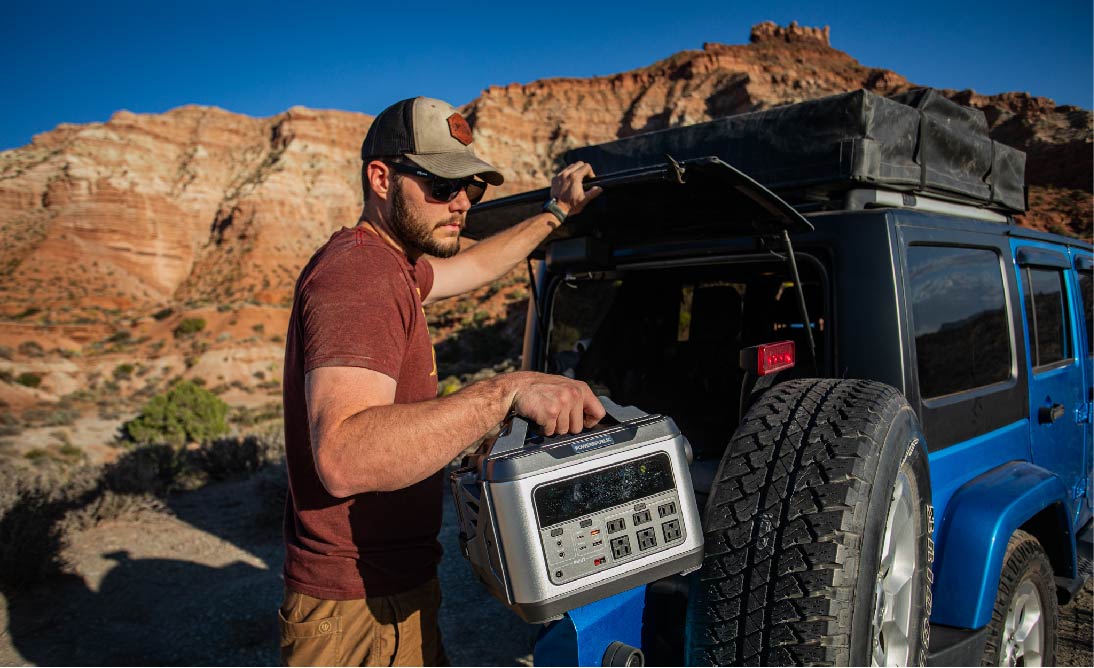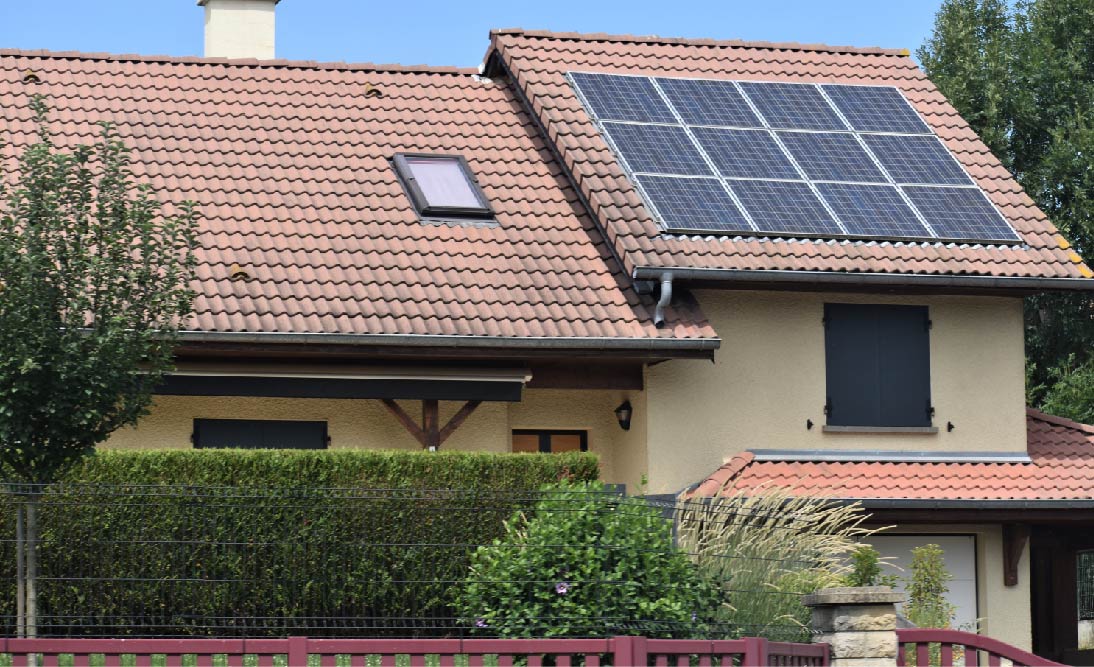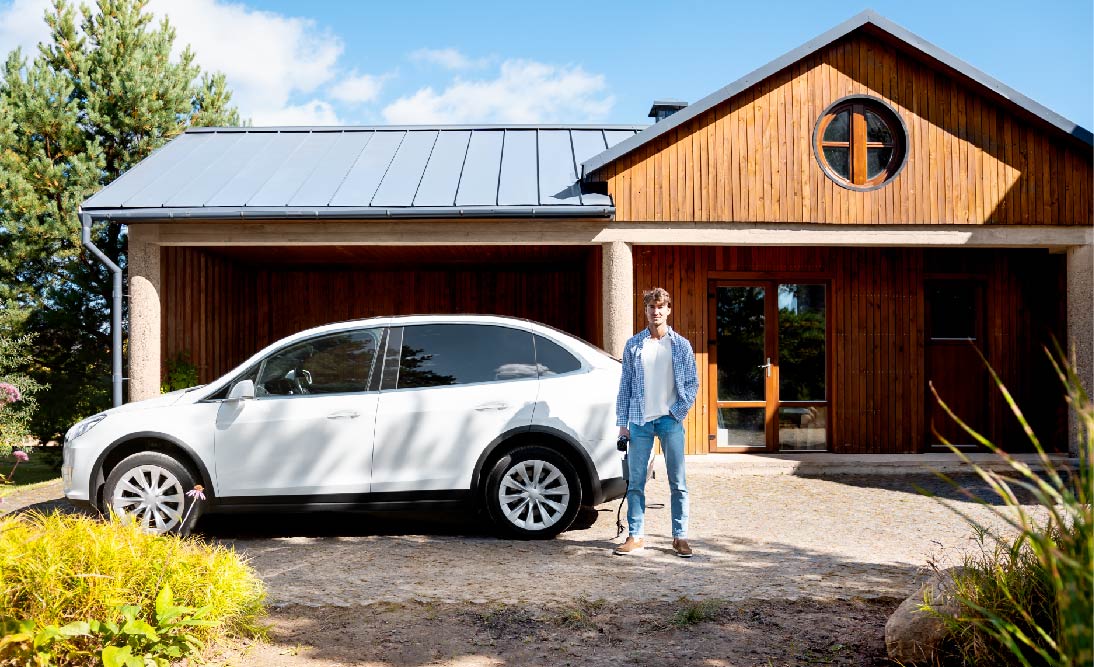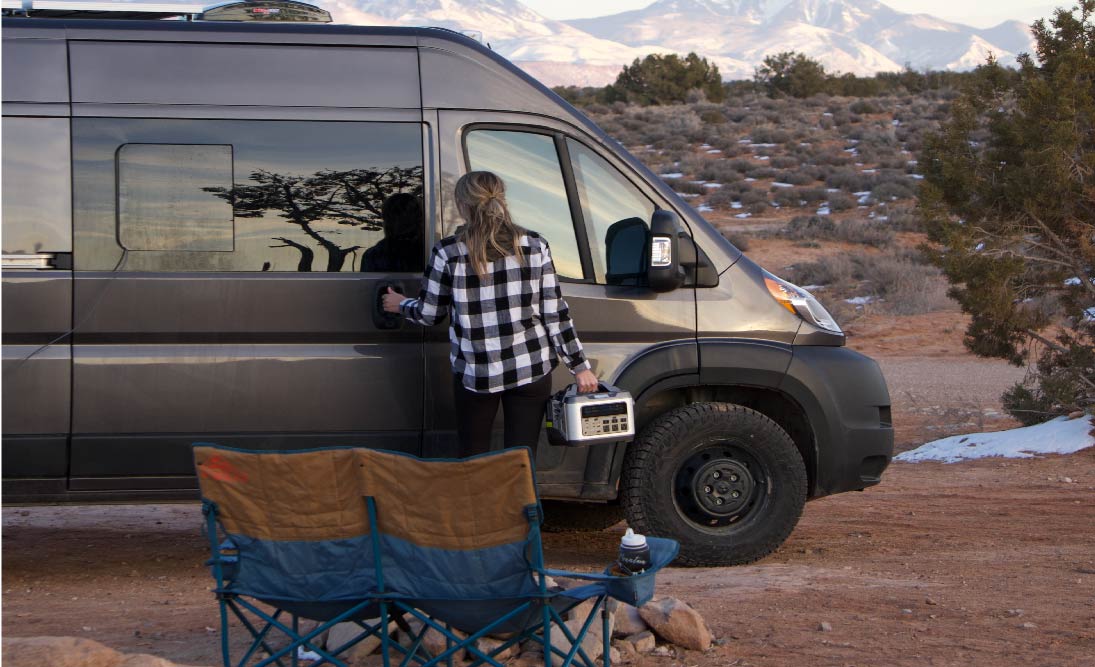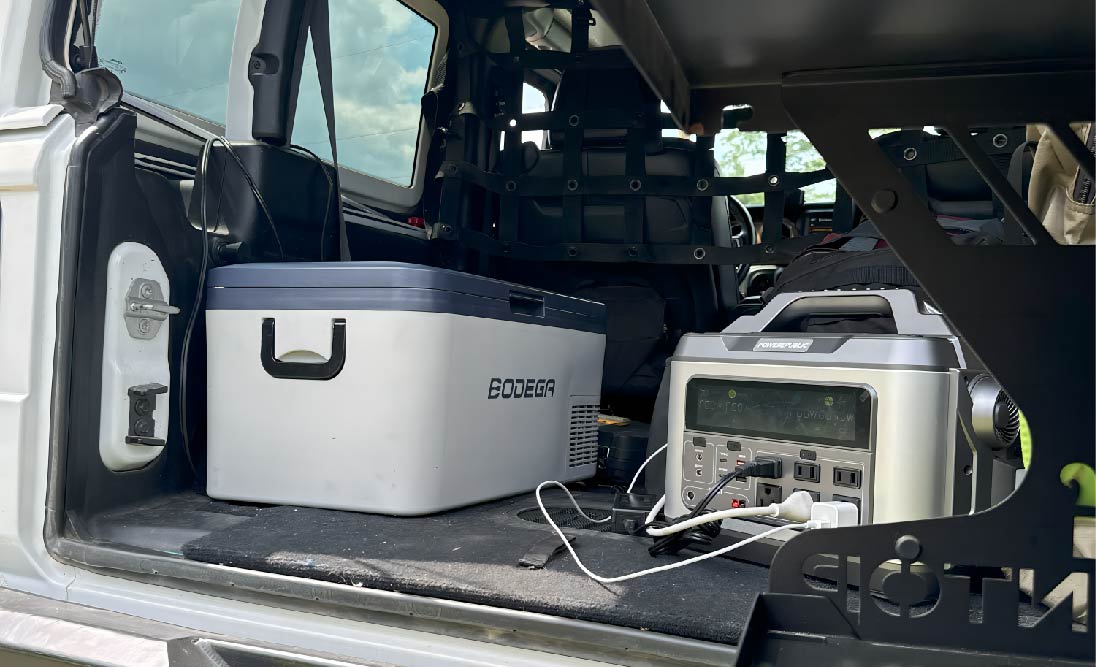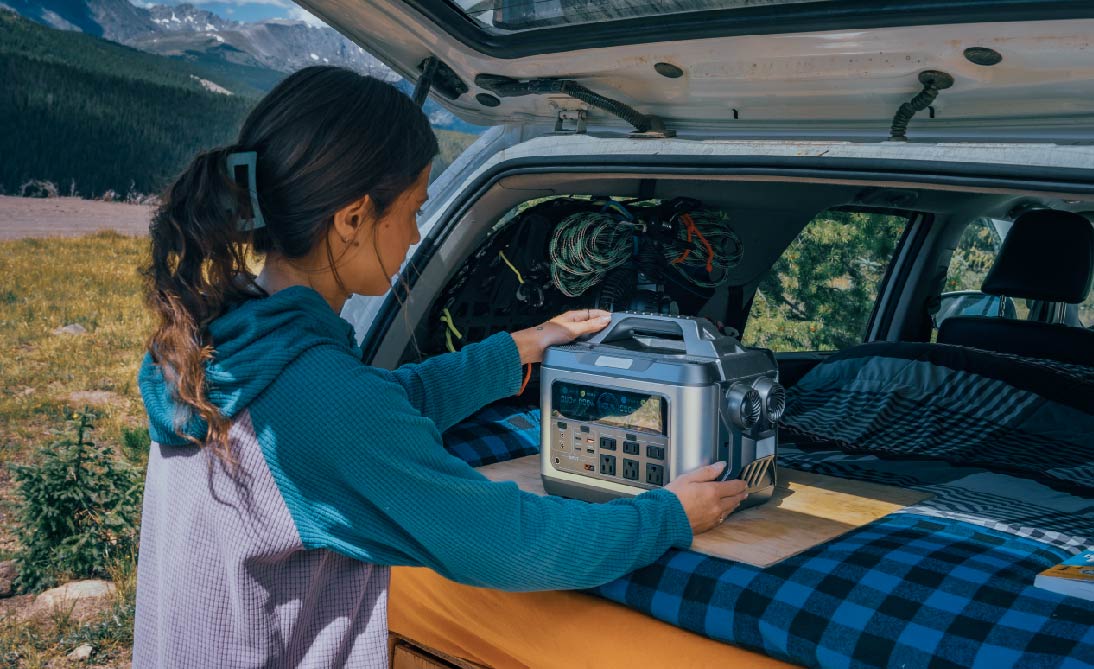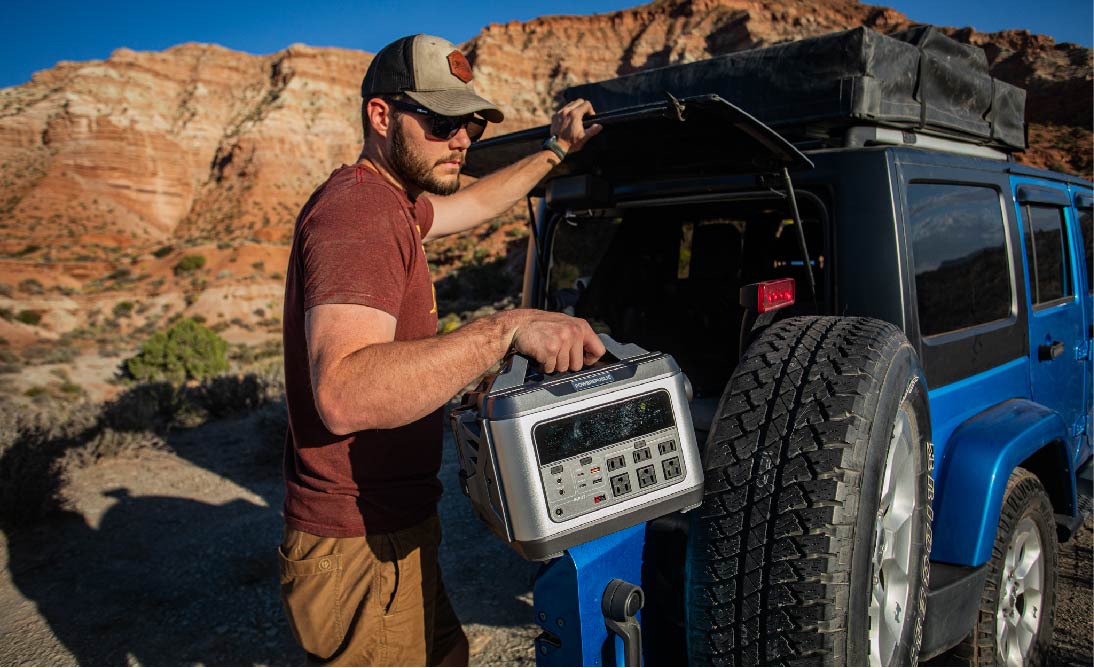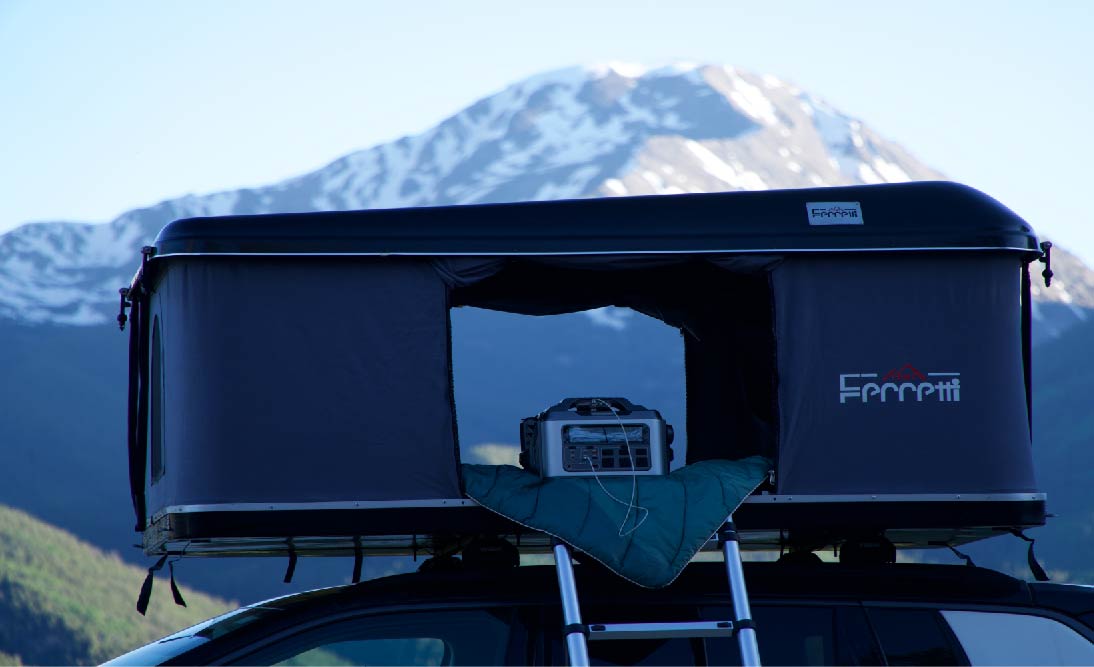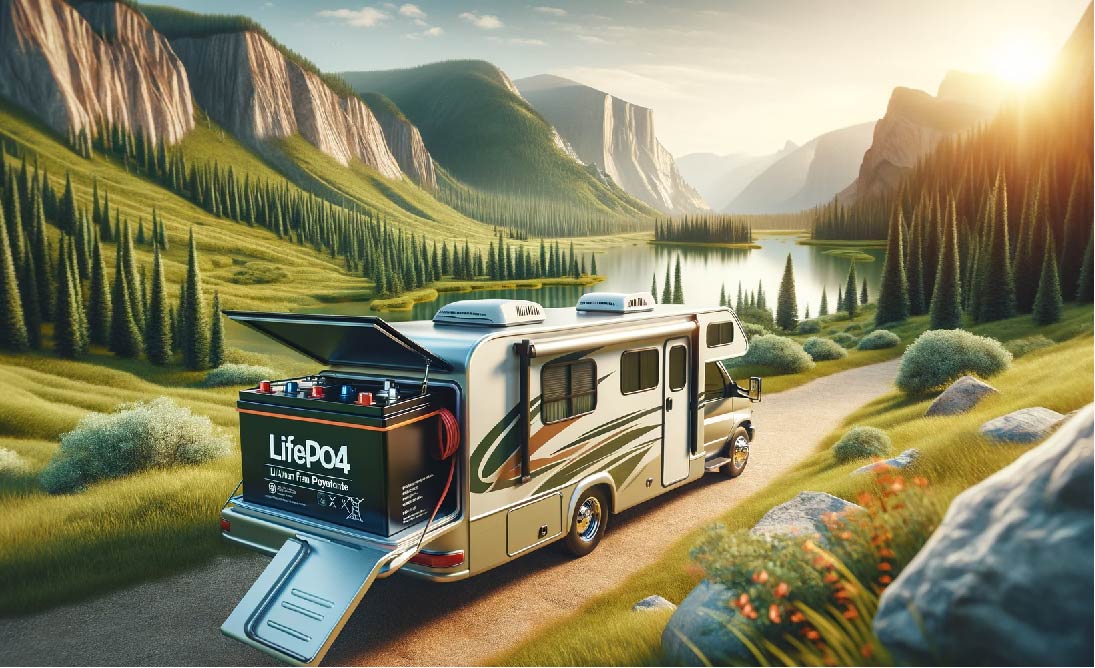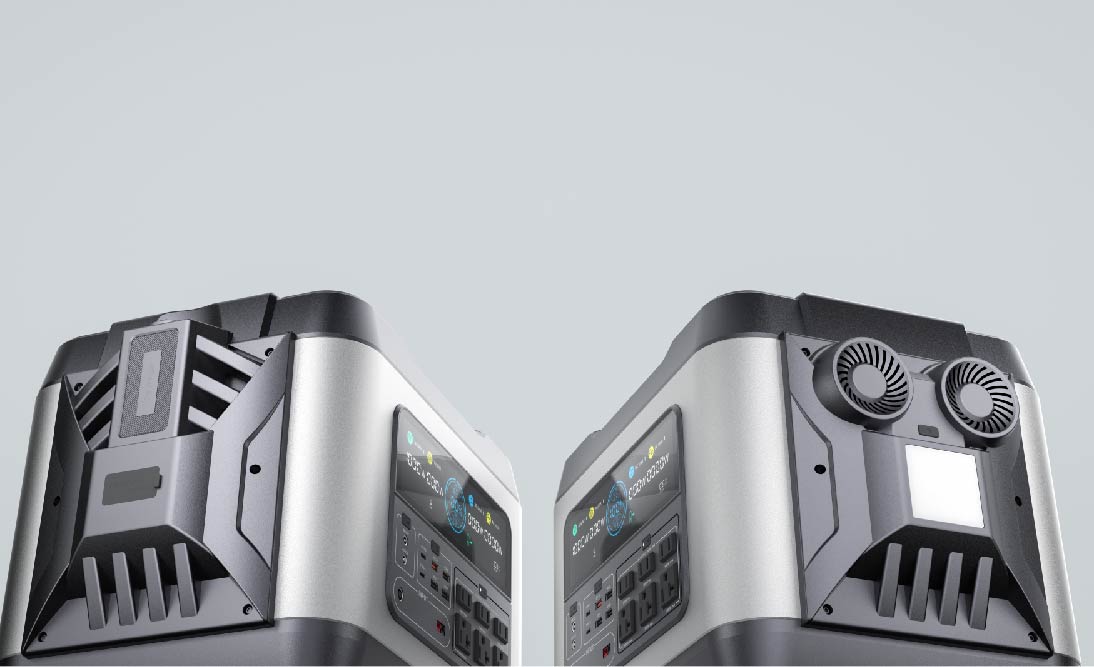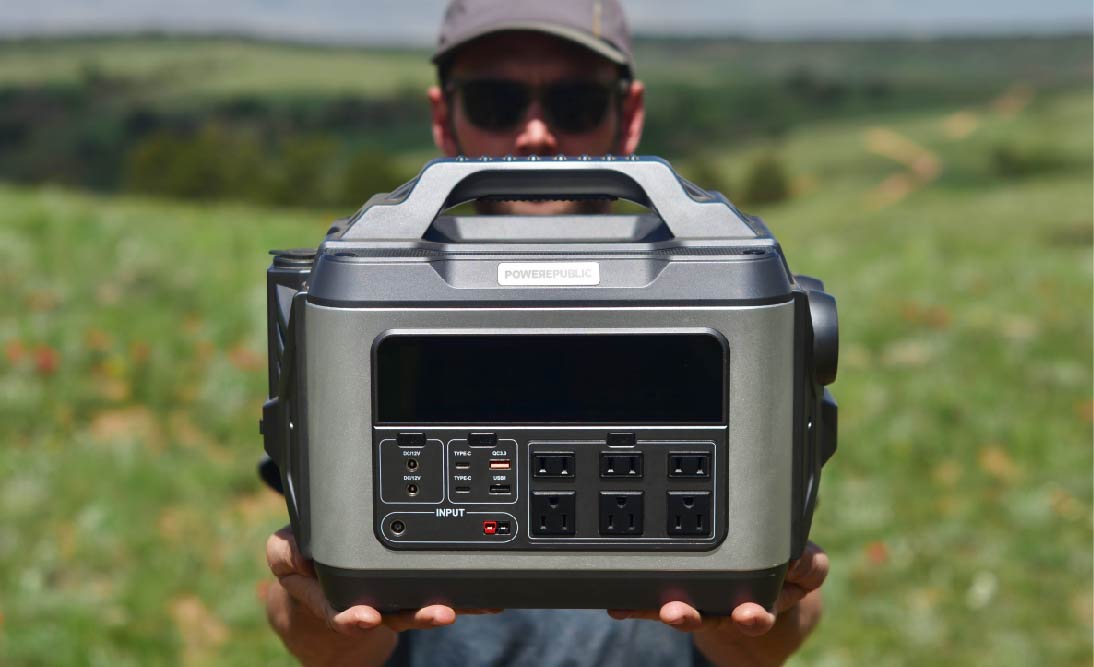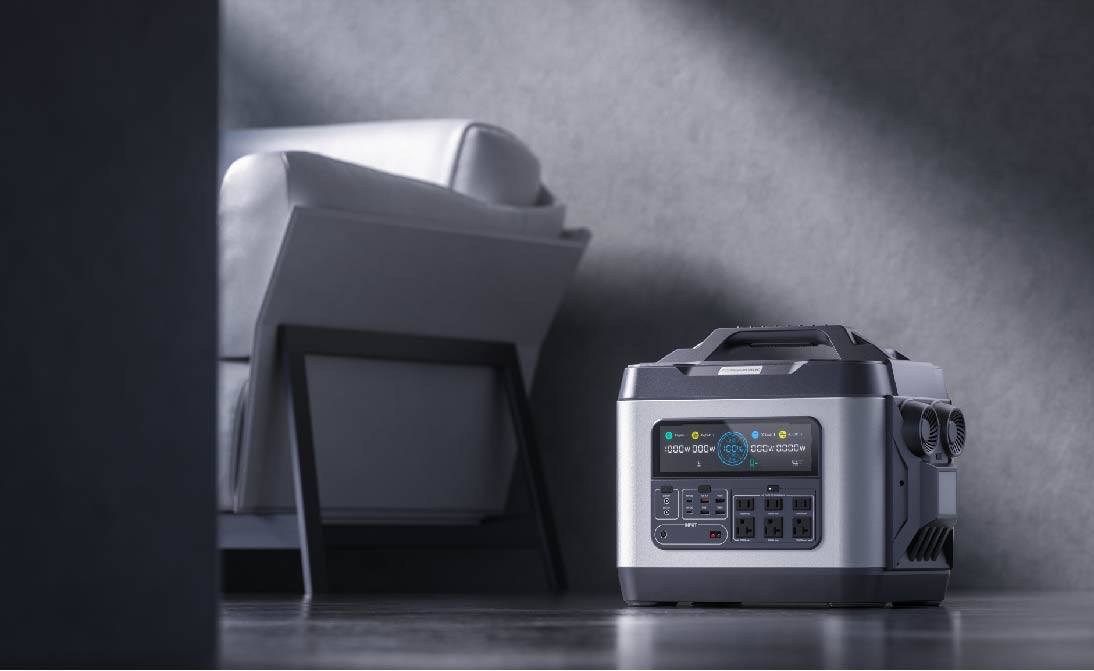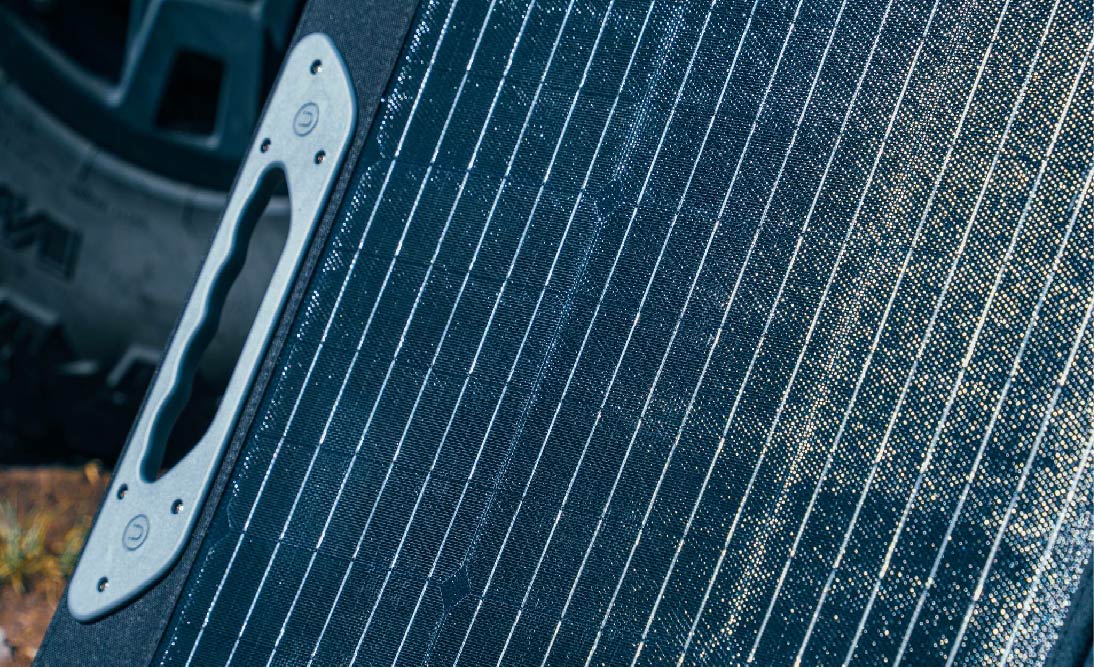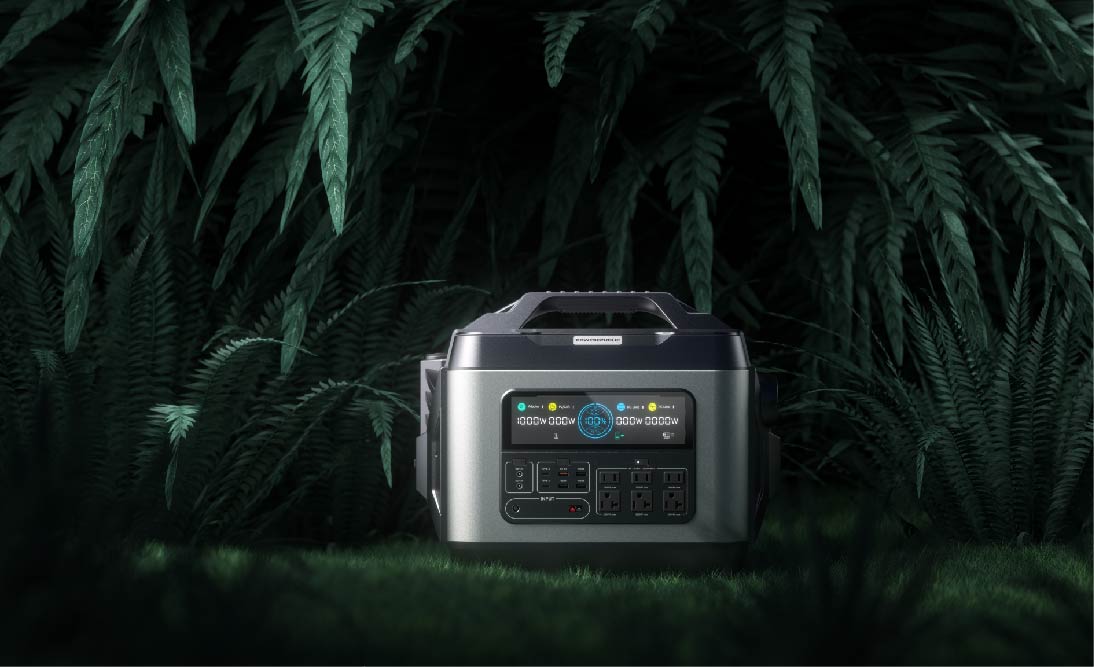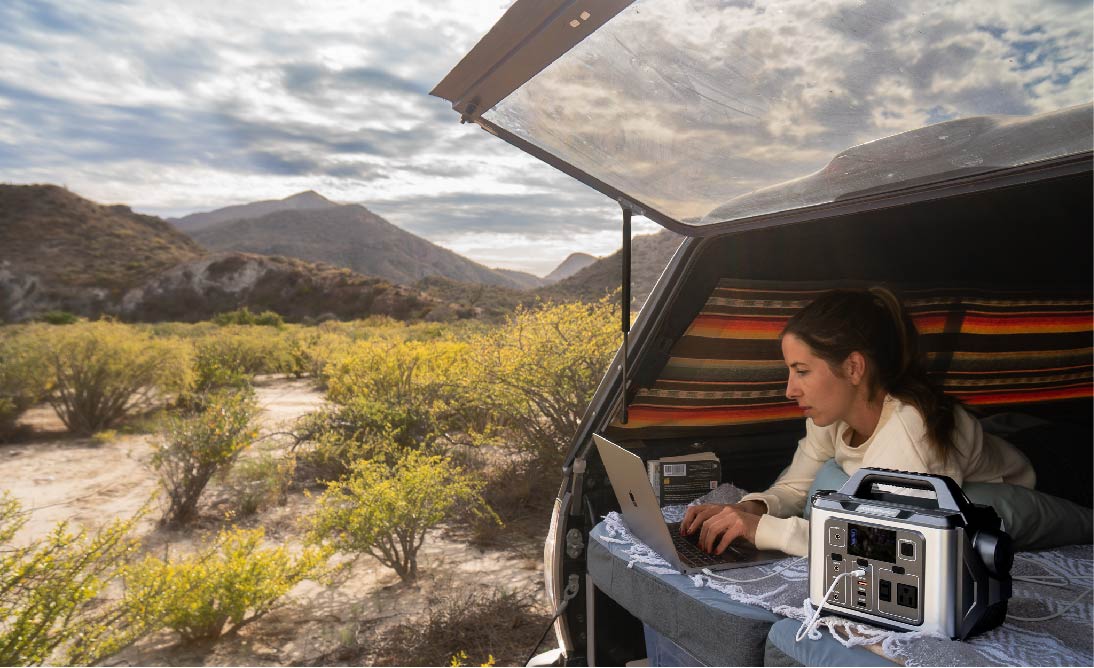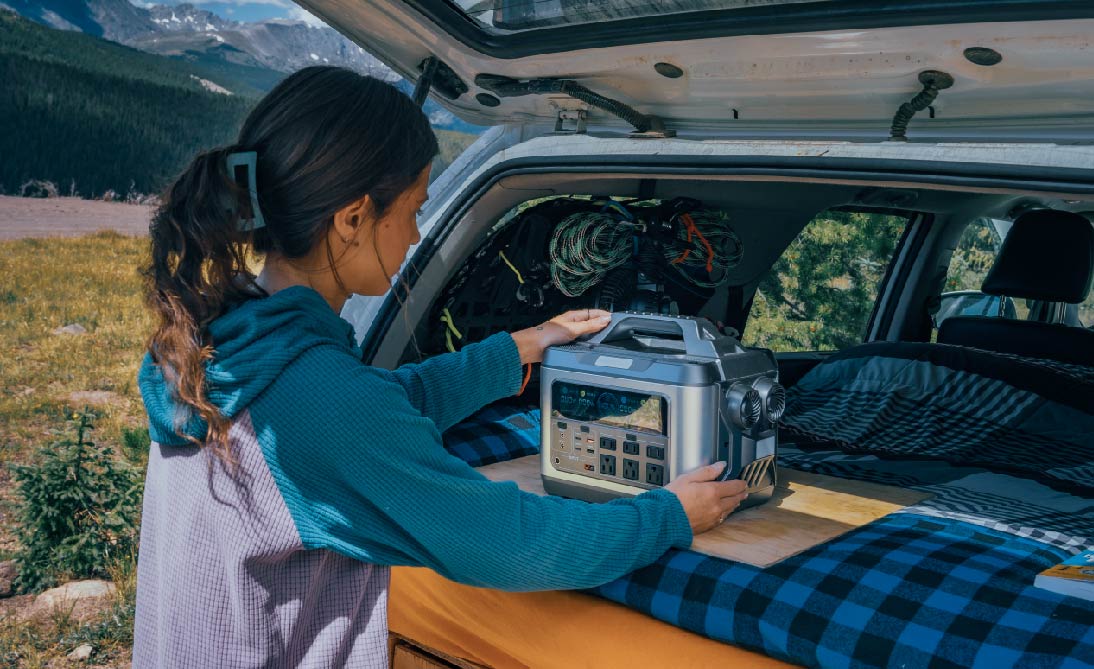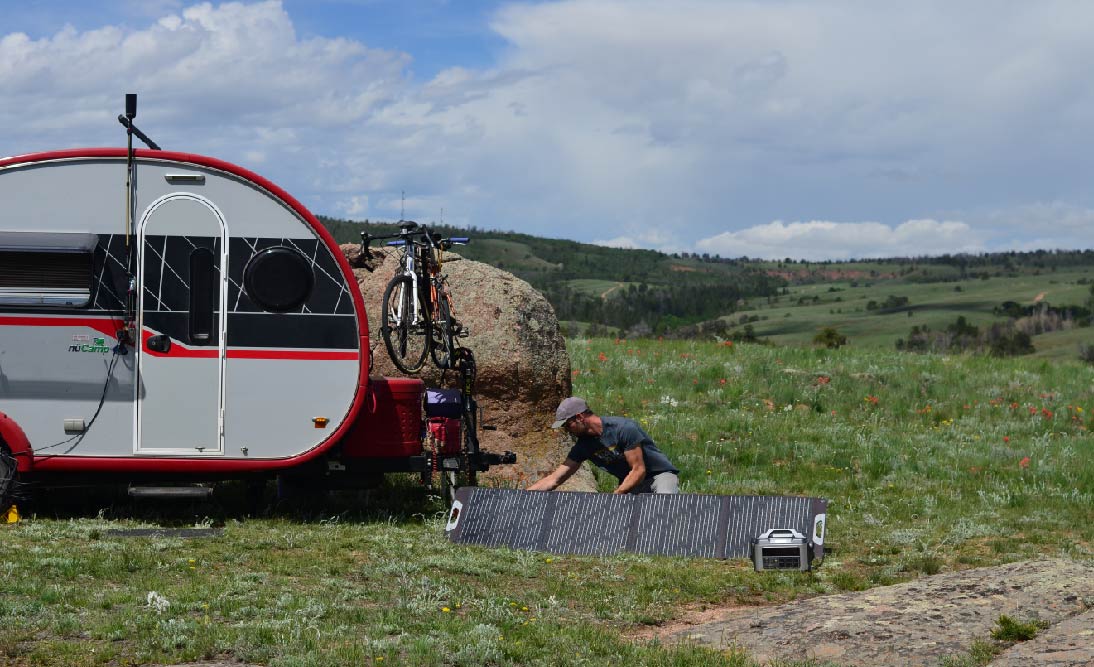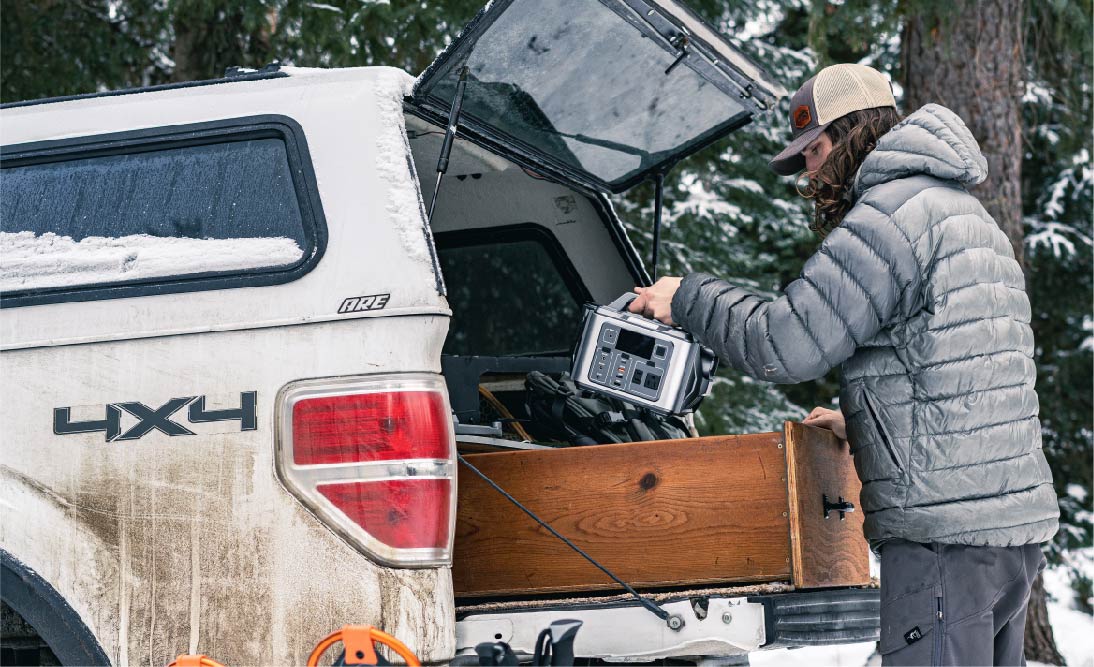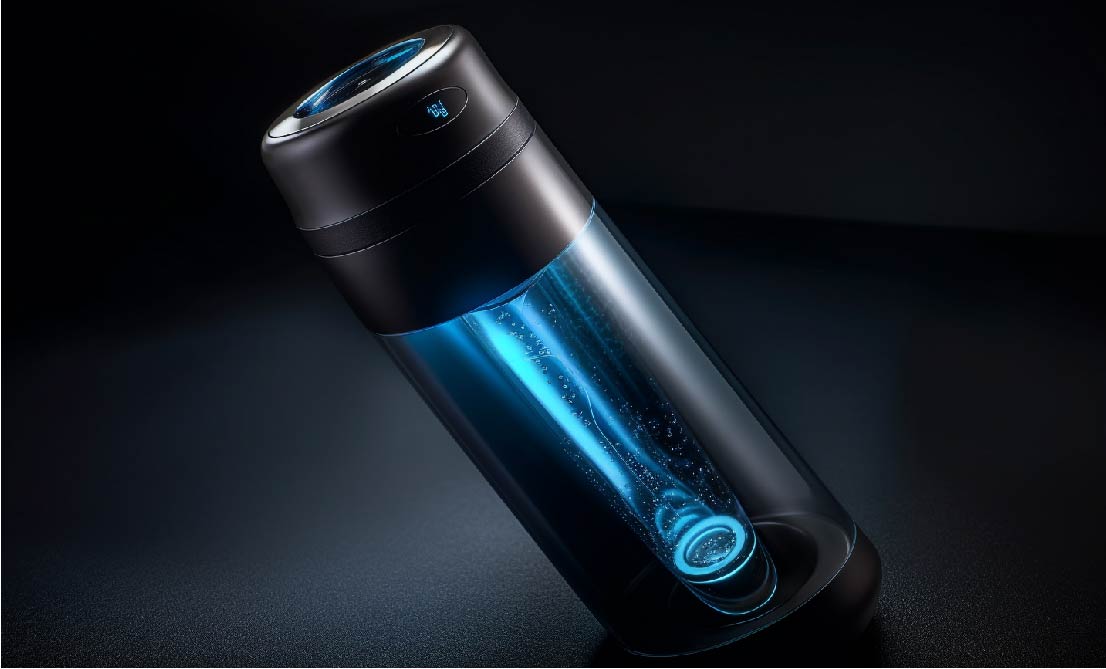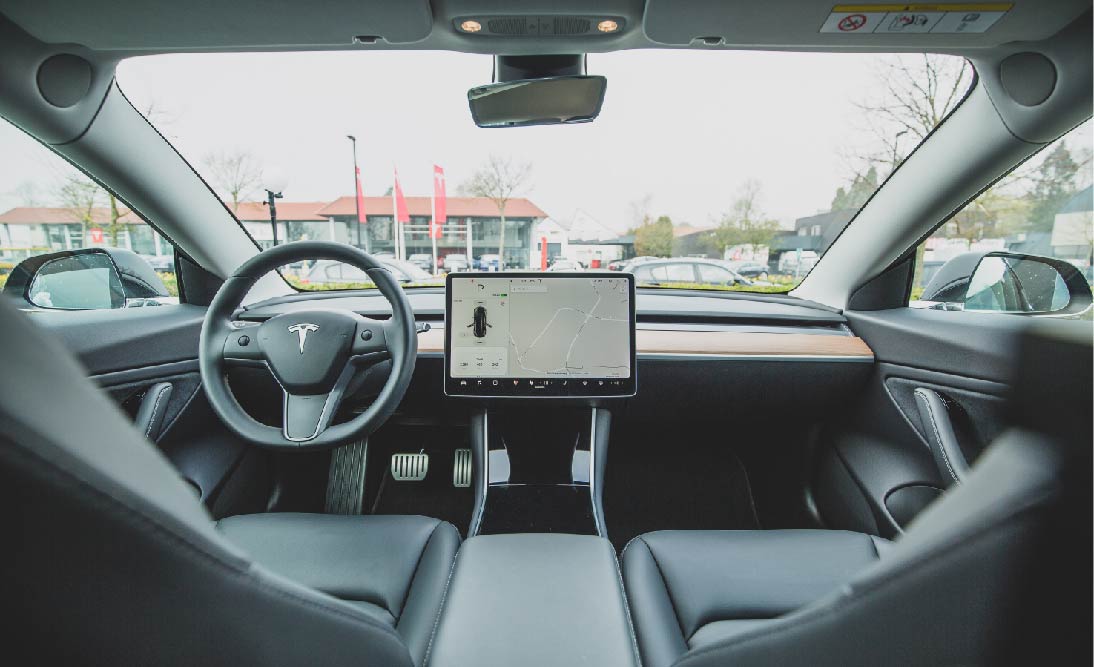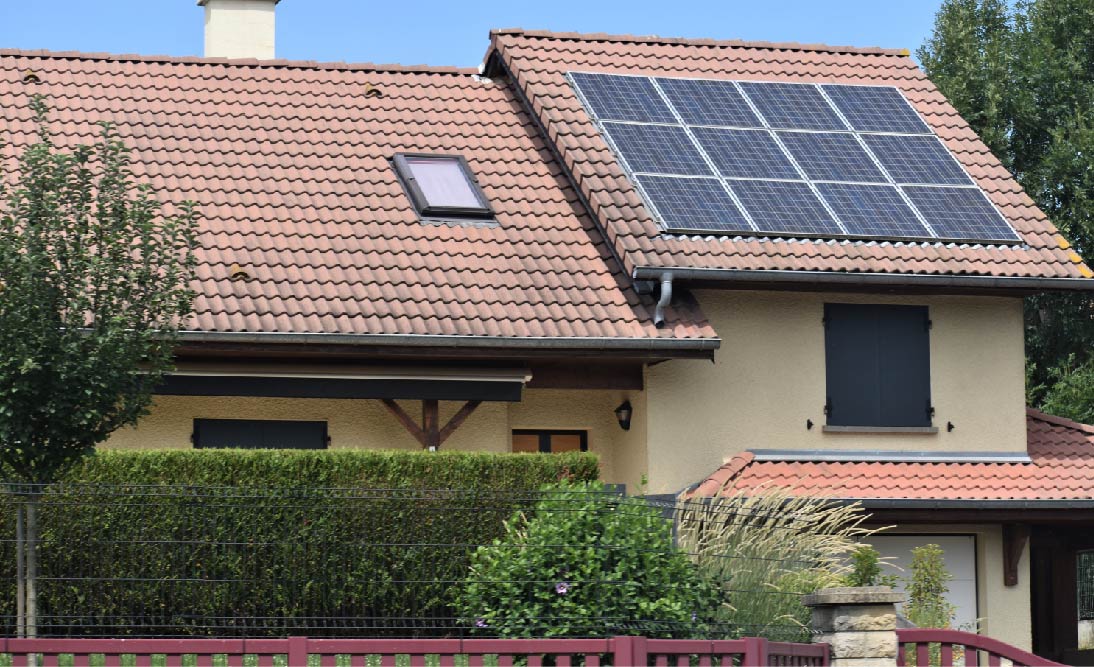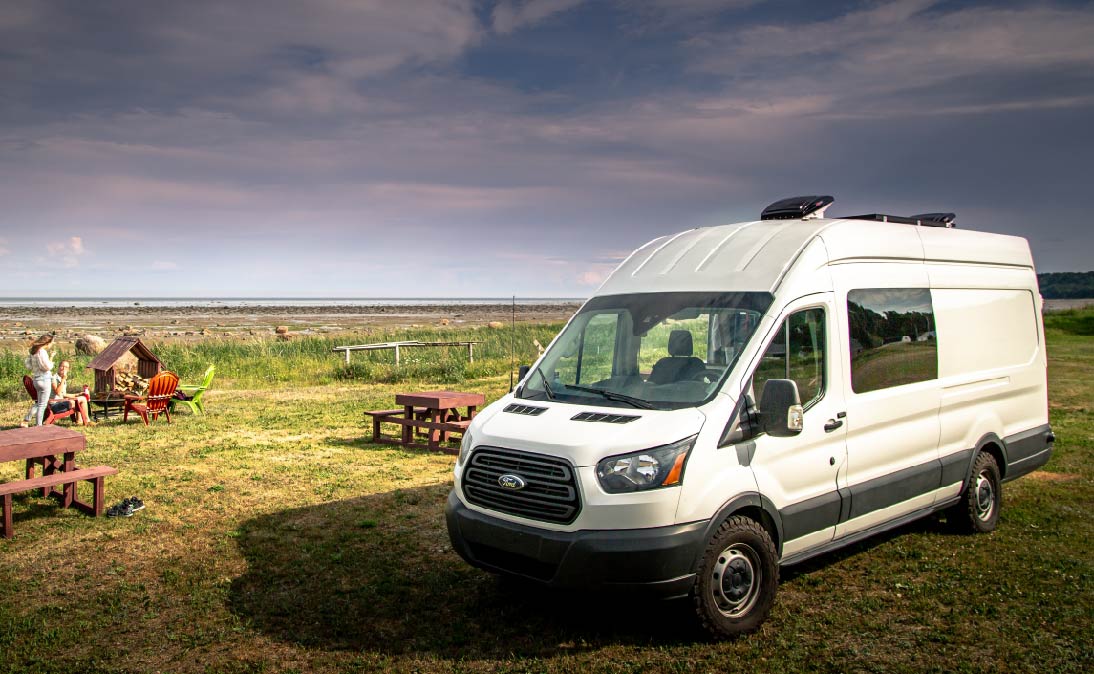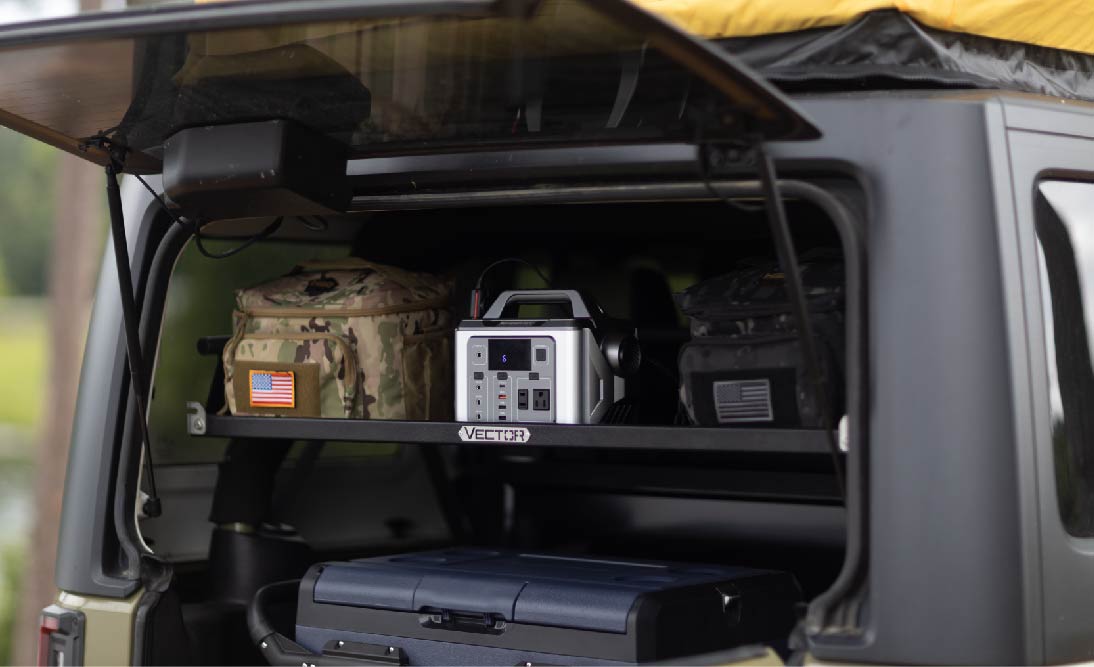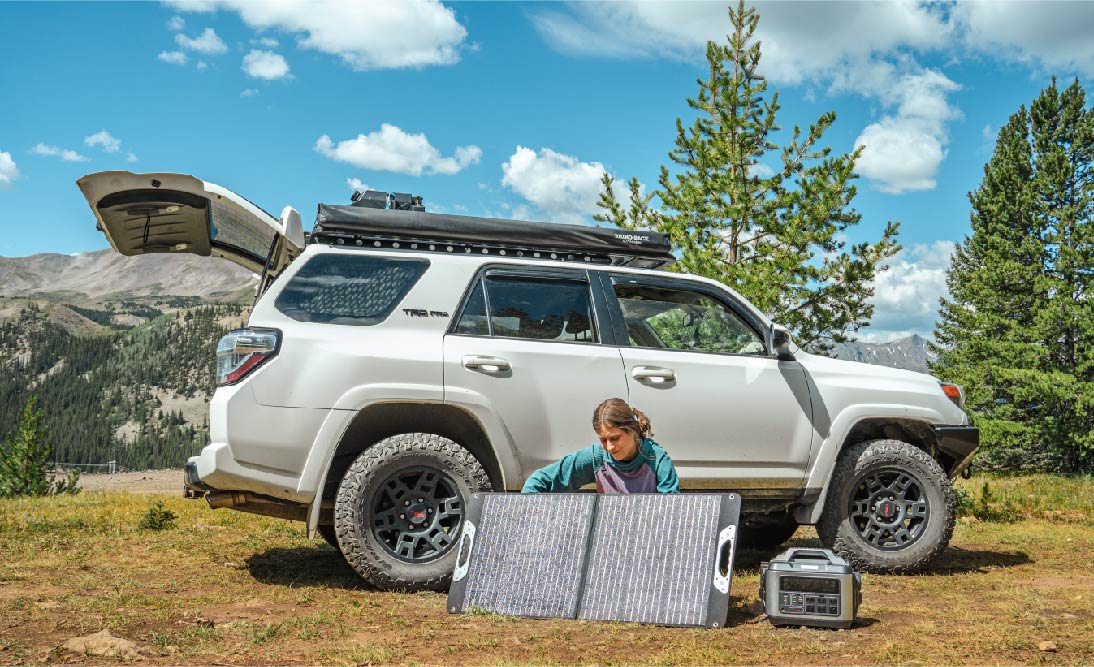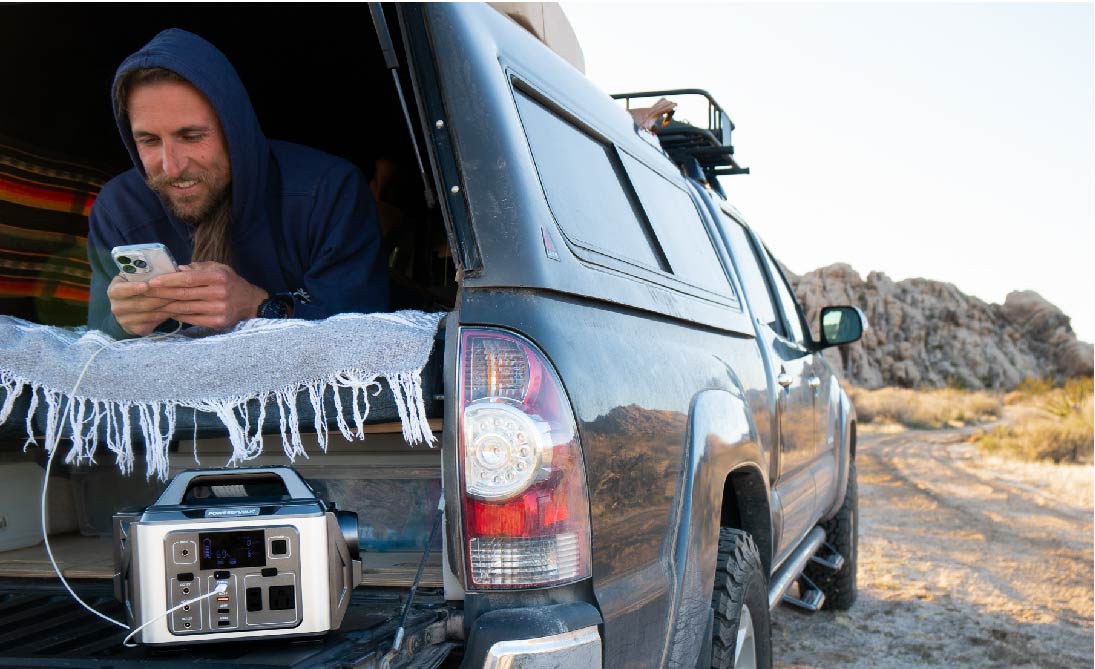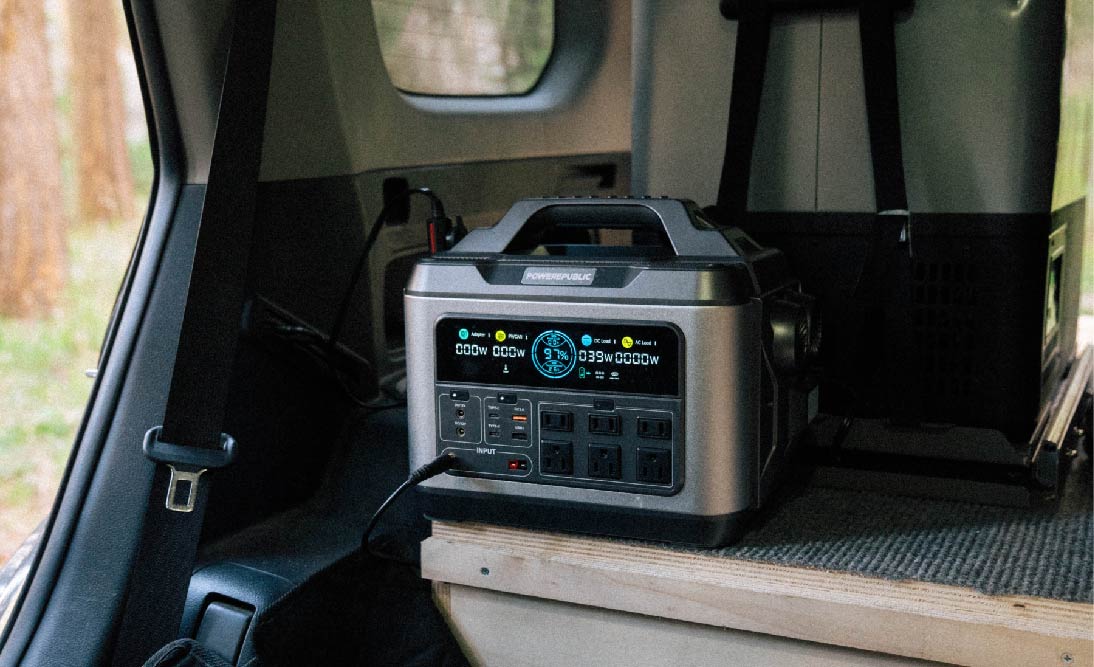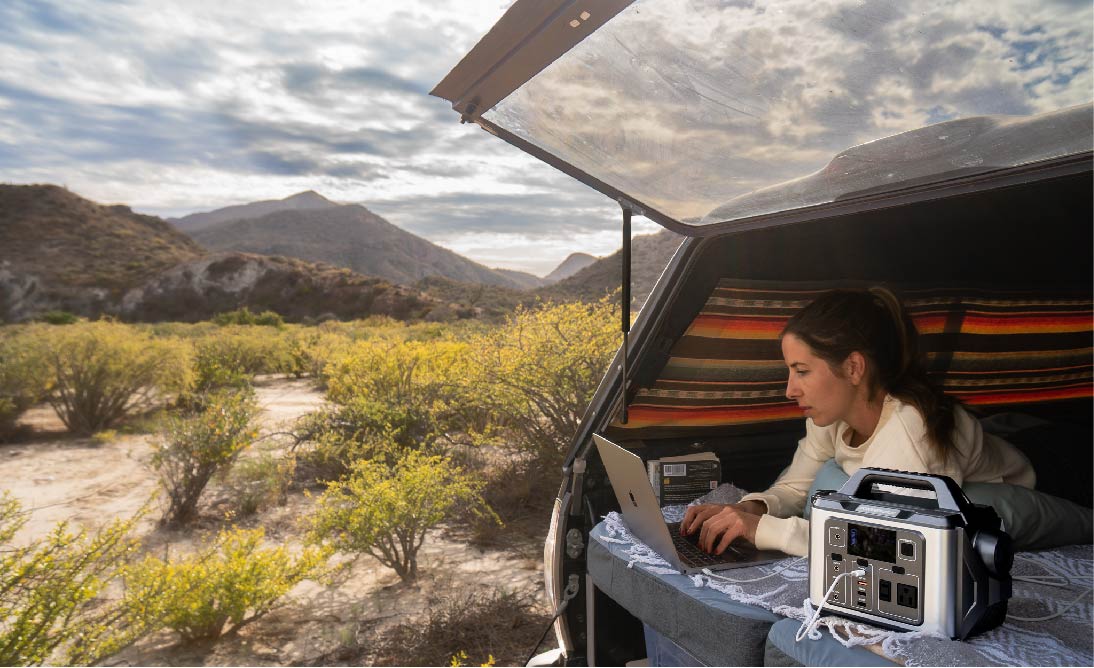Table of Contents:
-
Best Camping Battery I: POWEREPUBLIC T306 Portable Power Station
-
Best Camping Battery II: POWEREPUBLIC T1200 Portable Power Station
Camping has become one of the most popular activities among people of different ages. Regardless of the length of the camping trip, it is very important to have enough electricity to keep all your gear charged to ensure a memorable experience. That’s where a camping battery comes into play.
In this article, we will focus on the discussion about camping batteries, how to select the best camping battery, the pros, and cons of camping batteries, introduce the POWEREPUBLIC T306 and T1200 models as two excellent options for the best camping battery, and address some frequently asked questions about the best camping battery.
Camping Batteries Overview

A camping battery, also known as a portable power station or generator, is a device designed to provide electrical power for various electronic devices and appliances while camping or in outdoor settings where access to traditional power sources may be limited. These batteries typically use rechargeable lithium-ion or lithium-polymer cells to store and deliver power.
There are different types of camping batteries, each with its features and capabilities. Here are some common types:
Portable Power Stations
-
These are all-in-one units that include a battery, inverter, and various output ports (USB, AC, DC).
-
Suitable for charging small electronic devices, and lights, and running small appliances.
-
Price Range: $150 to $1000+
-
The cost varies depending on the capacity, brand, and additional features.
Solar Generators
-
Similar to portable power stations but with the added ability to recharge using solar panels.
-
Ideal for sustainable and eco-friendly power in remote locations.
-
Price Range: $200 to $2000+
-
The inclusion of solar panels and higher capacity can contribute to increased prices.
Jump Starter Power Banks
-
They are designed not only for charging devices but also for jump-starting vehicles.
-
Compact and portable, suitable for emergencies.
-
Price Range: $50 to $200+
-
Compact and portable models are generally more affordable.
Deep Cycle Batteries
-
Larger and heavier batteries are designed for extended use and multiple charge cycles.
-
They are typically used in conjunction with solar panels for off-grid power.
-
Price Range: $100 to $500+
-
Larger capacity and durability may affect the price.
Fuel-Based Generators
-
While not a battery per se, these generators use fuels like gasoline or propane to produce electricity.
-
Suitable for longer camping trips where a continuous power source is required.
-
Price Range: $200 to $2000+
-
The cost depends on the generator's power output, fuel type, and additional features.
When selecting a camping battery, it's essential to consider factors such as capacity (measured in watt-hours), the number and types of output ports, recharge options (solar, AC, car), weight, and overall durability. The choice depends on the specific power needs and preferences of the camper.
Why Do We Need a Camping Battery?

A camping battery serves as a crucial component for various reasons, enhancing the overall camping experience and addressing the challenges posed by the absence of traditional power sources.
Here are some key reasons why a camping battery is essential:
-
Power for Electronic Devices: In today's connected world, campers often carry electronic devices such as smartphones, cameras, and GPS devices. A camping battery ensures these devices remain charged, allowing for communication, navigation, and capturing memories.
-
Lighting: Many camping trips involve staying in tents or remote locations where traditional lighting is not available. A camping battery can power LED lights, lanterns, or string lights, providing illumination for activities after sunset.
-
Appliance Operation: Portable power stations can run small appliances like electric stoves, coffee makers, or coolers, adding convenience and comfort to the camping experience.
-
Emergency Power: In case of emergencies, having a camping battery can be a lifeline. It can power communication devices, and medical equipment, or even jump-start a vehicle with additional features like jump starter power banks.
-
Entertainment: For longer camping trips, entertainment devices such as portable speakers, radios, or even small televisions can be powered by camping batteries, offering recreation during downtime.
-
Sustainable Power: Solar generators and deep cycle batteries provide a sustainable and eco-friendly power source, reducing the reliance on traditional fuel-powered generators and minimizing the environmental impact of camping activities.
-
Flexibility and Independence: Camping batteries provide the flexibility to set up camp in more remote locations, away from established campsites with power hookups. This independence allows campers to explore and enjoy nature more freely.
-
Extended Trips: For extended camping trips or off-grid adventures, where access to power outlets is limited, a camping battery becomes essential to maintain power for an extended duration.
So, a camping battery is a versatile and indispensable tool that ensures campers have access to reliable power, making their outdoor experience more enjoyable, convenient, and safe. It provides the means to stay connected, powered, and entertained while embracing the beauty of nature.
Pros and Cons of Camping Batteries

Pros of Camping Batteries
-
Portability: Most camping batteries are designed to be compact and portable, allowing campers to easily carry them to remote locations without relying on traditional power sources.
-
Versatility: Camping batteries come in various types, such as portable power stations, solar generators, and deep cycle batteries, providing users with options that suit different camping needs and preferences.
-
Clean and Quiet Operation: Unlike fuel-based generators, camping batteries operate quietly and without emitting fumes, making them environmentally friendly and suitable for quiet outdoor environments.
-
Rechargeable: Camping batteries are typically rechargeable, allowing campers to replenish power using various sources like solar panels, AC outlets, or car chargers.
-
Multiple Output Ports: Many camping batteries come with multiple output ports, including USB, AC, and DC ports, enabling users to charge a variety of devices and run different appliances simultaneously.
-
Solar Charging Option: Some camping batteries, like solar generators, offer the option to recharge using solar panels, providing a sustainable and renewable energy source for extended trips.
-
Emergency Features: Certain camping batteries, such as jump starter power banks, can serve dual purposes by providing power for devices and jump-starting vehicles in emergencies.
Cons of Camping Batteries
-
Limited Capacity: Portable batteries have limited capacity compared to larger generators or fuel-based systems, which may not be sufficient for running high-power appliances or devices for an extended period.
-
Recharging Time: Depending on the capacity and charging method, recharging camping batteries can take some time, especially with solar charging, which may not be suitable for urgent power needs.
-
Dependence on Weather (for Solar Generators): Solar generators rely on sunlight for recharging, making them less effective during cloudy days or in locations with limited sunlight.
-
Initial Cost: The upfront cost of purchasing a quality camping battery, especially solar generators or high-capacity portable power stations, can be relatively high.
-
Weight (for Some Types): Deep cycle batteries, in particular, can be heavy, impacting the overall weight of camping gear, and may not be suitable for campers looking to minimize weight.
-
Limited Continuous Power Output: While suitable for charging small devices and running lightweight appliances, camping batteries may not provide continuous power for larger or high-energy-consuming equipment.
-
Limited Lifespan: The rechargeable cells in camping batteries have a limited lifespan, and their efficiency may decrease over time, requiring eventual replacement.
How To Select The Best Camping Battery?

Selecting the best camping battery involves careful consideration of various factors to ensure it aligns with your specific power needs, budget constraints, and camping preferences.
Here is a step-by-step guide to help you make an informed decision:
1. Figure Out Your Power Needs
-
Begin by identifying the electronic devices and appliances you plan to power during your camping trips. Please make a list of their power requirements in watts or watt-hours. Consider devices like smartphones, laptops, lights, portable fridges, or any other camping gear you intend to use.
-
Example: If you have a smartphone with a 3,000mAh battery (approximately 11.1 watt-hours), and you plan to charge it twice a day, you'd need a battery with at least 22.2 watt-hours for your phone alone.
2. Estimate Total Power Consumption
-
Calculate the total power consumption by adding up the watt-hours for all your devices. This will give you an estimate of the minimum capacity your camping battery should have to meet your needs throughout the trip.
-
Example: If your smartphone requires 22.2 watt-hours per day, a laptop needs 50 watt-hours, and LED lights consume 20 watt-hours nightly, your total daily consumption would be 92.2 watt-hours.
3. Consider Additional Features
-
Evaluate the types of output ports the camping battery offers. Ensure it has sufficient USB, AC, and DC ports to accommodate all your devices. Consider other features like a solar charging option, which can be beneficial for extended trips in sunny locations.
-
Example: If you have a camera with a DC power adapter and a laptop with an AC charger, make sure the camping battery has compatible ports for both.
4. Set a Budget
-
Determine how much you're willing to invest in a camping battery. Prices can vary based on capacity, brand, and additional features. Setting a budget helps narrow down your options and ensures you find the best value for your money.
-
Example: If your budget is $300, you can explore various models within that price range, considering factors like capacity and features.
5. Assess Recharge Options
-
Evaluate the recharge options offered by the camping battery. Common methods include solar charging, AC outlets, and car chargers. Choose a battery with recharge options that align with your camping environment and preferences.
-
Example: If you frequently camp in sunny locations, a camping battery with solar charging capability could be a valuable investment for sustainable power.
6. Consider Weight and Size
-
Assess the weight and dimensions of the camping battery, especially if you prioritize portability. Consider the overall weight of your camping gear and aim for a battery that complements your desire for lightweight equipment.
-
Example: If you are a backpacker aiming to minimize weight, opting for a smaller and lighter portable power station might be preferable.
7. Research Brand Reputation
-
Look for reputable brands with positive reviews from other campers. Reliable brands often provide durable and efficient camping batteries, reducing the likelihood of malfunctions during your trips.
-
Example: Research customer reviews for the specific models you are considering to ensure they meet performance expectations.
8. Compare Prices and Features
-
Compare prices and features of different camping batteries within your budget. Consider not only the upfront cost but also the overall value, including capacity, durability, and additional functionalities.
-
Example: If two camping batteries have similar capacities but one offers a solar charging option at a slightly higher cost, weigh the benefits of the added feature against the price difference.
9. Check Warranty, Customer Support, and Rating
-
Ensure the camping battery comes with a warranty and reliable customer support. A warranty provides peace of mind, and good customer support can be crucial if you encounter any issues during your camping adventures.
-
Example: Opt for a camping battery with a 2-year warranty and positive feedback regarding the brand's customer service responsiveness.
-
Also, you can check out the rating on Trustpilot for brands to get a better idea. POWEREPUBLIC has a 4.5 rating on Trustpilot.
By systematically going through these steps and considering examples relevant to your camping needs, you can confidently select the best camping battery that aligns with your power requirements, budget constraints, and outdoor aspirations. Remember, the right camping battery enhances your camping experience, ensuring you have a reliable and portable power source for all your adventures.
Best Camping Battery I: POWEREPUBLIC T306 Portable Power Station

If you value portability, the POWEREPUBLIC T306 portable power station would be an excellent choice. Our T306 model weighs about 9.2 pounds, making it one of the best camping batteries for outdoor enthusiasts and shutterbugs. Also, you can take it with you anywhere you go.
Although the T306(300W/296Wh, surge 600W) model is petite, it is quite practical and powerful. With 10 output ports, including 2 AC outlets, 2 USB ports, 1 QC3.0 port, 1 Type-C port, 3 DC/12V ports, and 1 Cigarette port, you can charge all your essential devices such as camera batteries, cell phones, laptops, drones, GPS machines, and so forth. It is one of the best camping batteries for hikers and campers, suitable for remote working, outdoor cinema, and backup power.
What’s more, the LED light on the back can illuminate your space if you don’t have any LED lights around. The POWEREPUBLIC T306 portable power station is compatible with a 100W portable solar panel as a solar generator kit. Both items are handy and portable. Our 100W portable solar panel uses monocrystalline cells with an efficiency rate of 23% to maximize the absorption of sunlight.
So, if you are in search of the best camping battery that balances portability and functionality, choose POWEREPUBLIC T306 + PV100 solar generator kit.
Best Camping Battery II: POWEREPUBLIC T1200 Portable Power Station

Compared to our T306 portable power station, the POWEREPUBLIC T1200 portable power station (1200W/1110Wh, surge 2600W) offers more functionality and versatility, as it can power larger items, making it one of the best camping batteries for van lifers and RVers.
With 13 output ports, including 6 AC outlets, 1 USB port, 1 QC3.0 port, 2 Type-C ports, 2 DC/12V ports, and 1 Cigarette port, you can charge larger items like TVs, electric blankets, mini-fridges, coffee machines, and more. It is one of the best camping batteries for van lifers and RVers, suitable for outdoor cooking, outdoor movies, outdoor fishing, and more.
What’s more, the LED light on the side can illuminate your space if you don’t have any LED lights around. The POWEREPUBLIC T1200 portable power station is compatible with either a 100W portable solar panel or a 200W portable solar panel as a solar generator kit. Both our 100W and 200W portable solar panels use monocrystalline cells with an efficiency rate of 23% to maximize the absorption of sunlight. The only difference between our 100W and 200W portable solar panels is that the 200W portable solar panel has a higher solar input for a faster recharging rate and a larger unfolded dimension.
So, if you are in search of the best camping battery that can power larger items and is more practical, choose POWEREPUBLIC T1200 + PV100 or T1200 + PV200 solar generator kits.
FAQ I: What’s the Lifespan of a Potable Power Station?
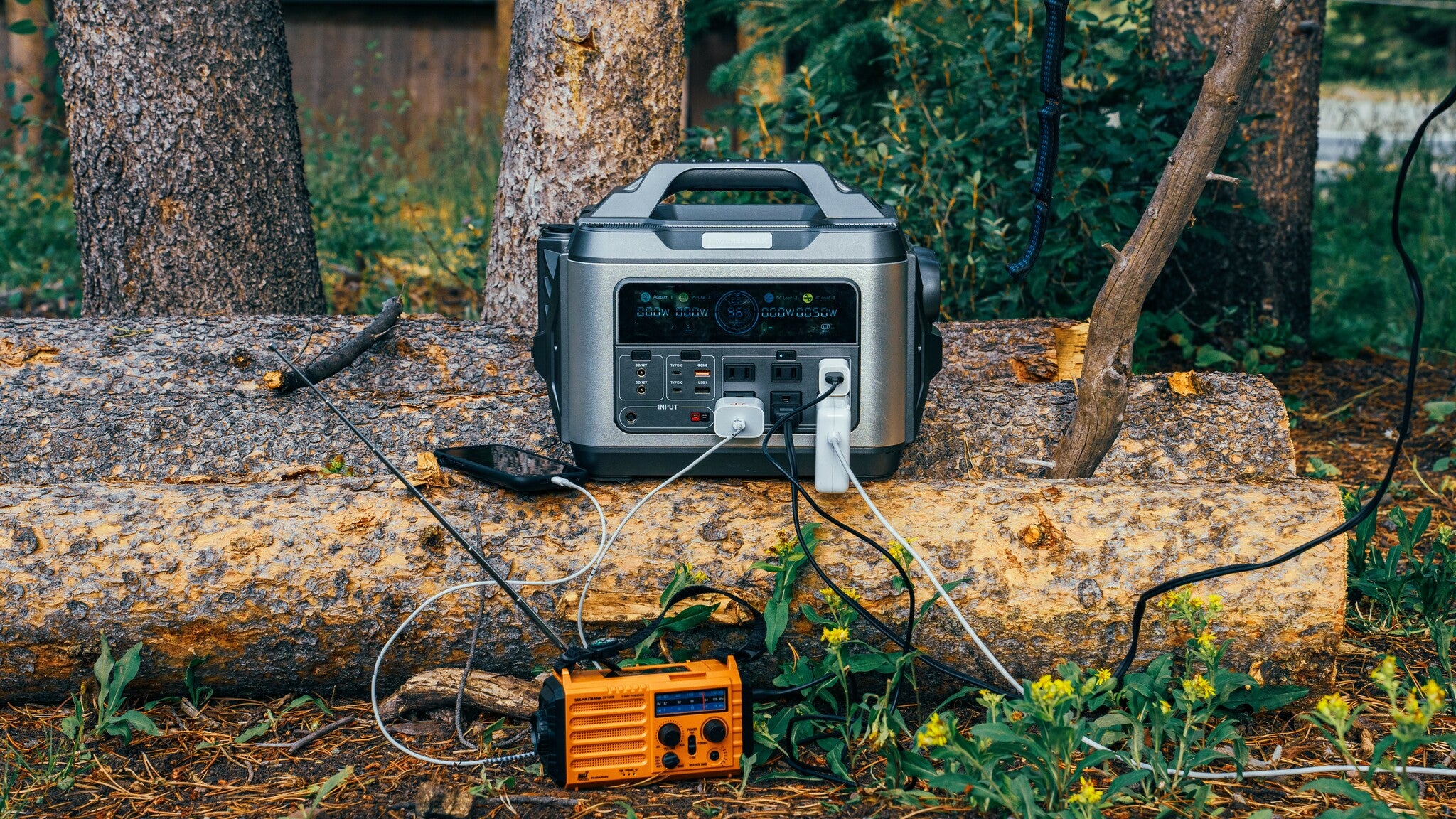
The lifespan of a portable power station depends on the type of battery it uses and how it's maintained. Most portable power stations on the market use lithium-ion batteries. The lifespan is often measured in charge cycles, where one cycle is a full 0-100% charge and discharge.
Example Calculation:
If a portable power station is rated for 500 charge cycles, and you use it once a day, it could last approximately 1.4 years (500 cycles / 365 days).
Other Factors Affecting Lifespan:
-
Depth of Discharge (DoD): The more you discharge and recharge the battery, the shorter its lifespan. For example, if you consistently discharge the battery to 50% instead of 80%, you can expect more cycles.
-
Temperature: High temperatures can accelerate battery degradation. Storing and using the power station in a cool environment can help extend its life.
-
Quality of Components: Higher-quality lithium-ion cells and overall construction contribute to a longer lifespan.
FAQ II: How To Take Good Care of My Portable Power Station?

To ensure optimal performance and longevity for your portable power station, follow these care tips:
-
Regular Use: It's good practice to use your portable power station regularly. Lithium-ion batteries can benefit from being exercised, but avoid deep discharges.
-
Keep It Clean: Wipe down the exterior of the power station with a clean, dry cloth. Avoid using harsh chemicals, and ensure that the ventilation ports are clear of debris.
-
Avoid Water Exposure: While many power stations are designed to be weather-resistant, it's best to avoid exposing them to water whenever possible.
-
Handle with Care: Portable power stations often contain sensitive electronic components. Handle the unit with care, avoiding drops or impacts.
FAQ III: Can I Use a Portable Power Station While Charging?

Yes, most portable power stations are designed to support "pass-through charging," allowing you to use the power station to power devices while it's being charged. However, there are some important considerations:
Power Limitations
Portable power stations have a maximum power output capacity. If the combined power draw of the devices you are using exceeds the available power, the power station may not be able to maintain or increase its charge.
Example: If your power station has a maximum output of 500 watts, and you are using devices that collectively draw 300 watts, the remaining 200 watts can be used to charge the power station.
Charging Time
Using the power station while charging may affect the overall charging time. The power station has to split its capacity between powering devices and recharging its internal battery.
Example: If a power station has a 1000Wh (watt-hour) capacity and is currently supplying 200W to devices while charging at 100W, the net charging rate is 100W (200W - 100W). It would take 10 hours to fully recharge the power station under these conditions (1000Wh / 100W).
Device Compatibility
Some sensitive electronic devices may not function optimally if the power supply is not stable. While many modern power stations are designed to provide a stable output, it's essential to check the specifications of both the power station and your devices.
Heat Generation
Simultaneous use and charging can generate heat. Ensure that the power station has proper ventilation, and avoid covering it or placing it in a confined space.
Manufacturer Guidelines
Always refer to the manufacturer's guidelines and specifications for your specific power station model. Some models may have specific restrictions or recommendations regarding simultaneous use and charging.
While using a portable power station while charging is generally possible and convenient, it's crucial to be mindful of the power limitations, charging time implications, and device compatibility to ensure optimal performance and safety.
Final Thoughts
In conclusion, selecting the best camping battery involves a thoughtful assessment of power needs, budget, and preferences. The versatile POWEREPUBLIC T306 Portable Power Station excels in portability and functionality, ideal for hikers and campers. For van lifers and RVers seeking more power, the POWEREPUBLIC T1200 Portable Power Station offers enhanced capacity and versatility. Both models prioritize convenience with multiple output ports and solar charging options. Understanding the lifespan of lithium-ion batteries and proper maintenance ensures longevity. While the option to use a portable power station while charging adds flexibility, users must be mindful of power limitations and device compatibility.
Overall, investing in a reliable camping battery enhances outdoor experiences, providing a clean, portable power source for electronic devices, lighting, appliances, and emergencies. Choose POWEREPUBLIC for a dependable and efficient solution, ensuring your camping adventures are powered seamlessly.
